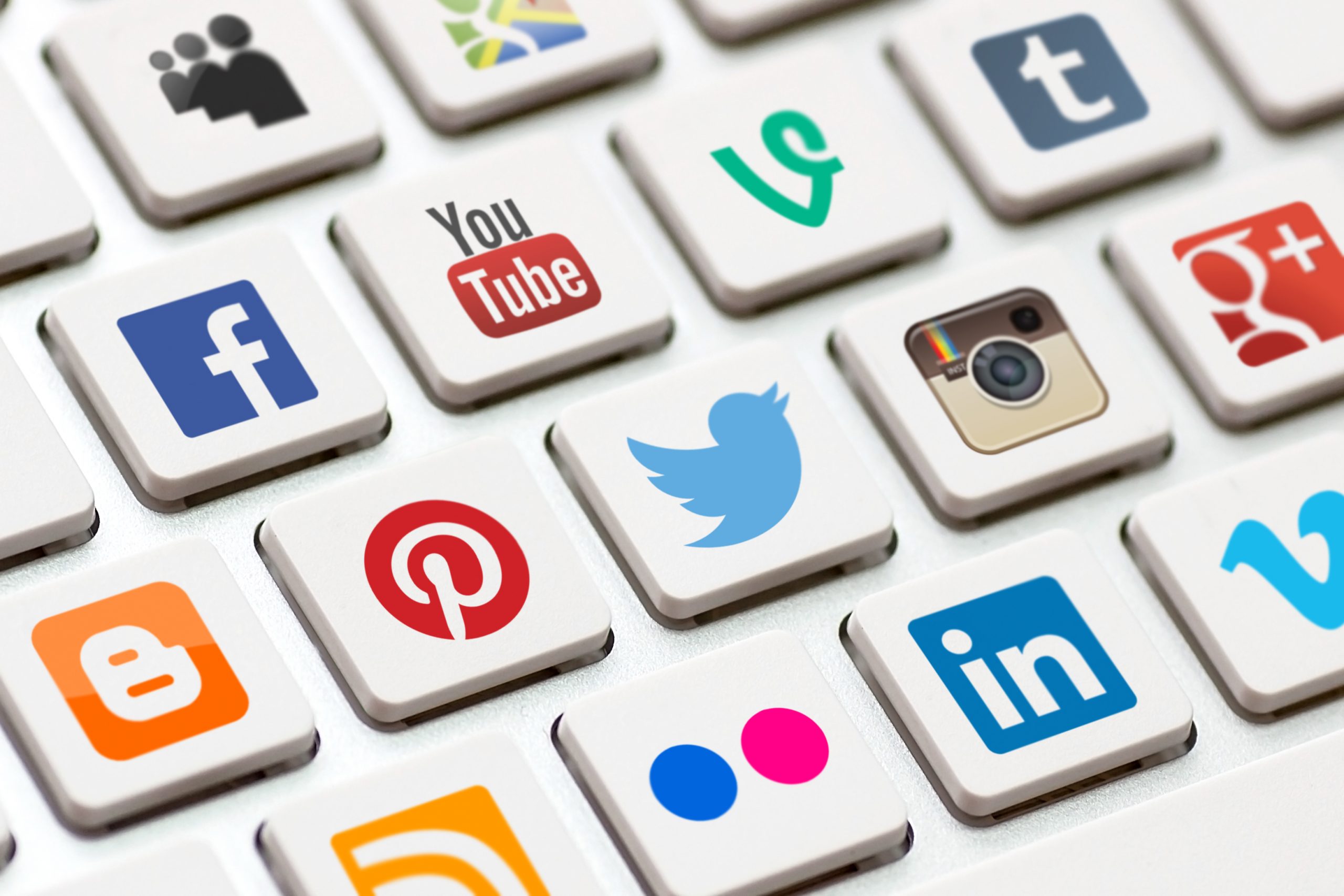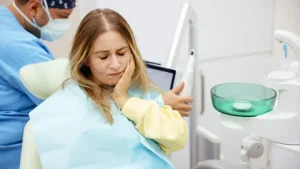health
Clicks & Loneliness: Breaking the Cycle for Deeper Connections

About the Author
Hey everyone! Alex here, a psychology student fascinated by the complex relationship between social media and our mental well-being. Growing up with constant online connection, I’ve seen the potential for both fulfilling interactions and a sense of disconnectedness. Today, let’s unpack the link between clicks and loneliness, and equip ourselves with tools to forge meaningful connections that go beyond the “like” button.
The Double-Edged Sword of Social Media
Social media platforms have revolutionized how we connect. We stay in touch with friends and family across vast distances, discover new communities based on shared interests, and express ourselves creatively. The constant stream of updates, however, can paint a deceiving picture of perfect lives, leading to feelings of inadequacy and a fear of missing out (FOMO).
Here’s the catch: the very features that connect us can also contribute to loneliness.
- Curated Perfection: Social media feeds are highlight reels, showcasing the best moments and carefully crafted online personas. Comparing ourselves to these unrealistic portrayals can breed feelings of insecurity and inadequacy.
- The Like Trap: The pursuit of validation through “likes” and comments becomes a never-ending cycle. The initial dopamine rush from online approval fades quickly, leaving us yearning for more, and potentially feeling lonelier if the validation doesn’t come.
- Quantity over Quality: The constant pressure to maintain a large online presence might overshadow fostering deeper relationships with close friends. Quantity of connections doesn’t equate to quality.

Image by: https://genuinely-you.co/post/blog/alleviating-the-loneliness-in-a-workaholic-relationship
Why Likes Don’t Fill the Void: Understanding Loneliness
Loneliness is a complex emotion distinct from mere solitude. It’s the feeling of isolation, a lack of meaningful connections, and a yearning for genuine emotional intimacy. While social media might offer a temporary sense of belonging, it often fails to address this deeper need.
Here’s why likes can’t fill the void:
- Lack of Vulnerability: Social media interactions tend to be surface-level. We share curated versions of ourselves, which hinders genuine vulnerability and the type of connection that fosters trust and emotional intimacy.
- Absence of Shared Experiences: Real connection thrives on shared experiences, laughter, tears, and the messy in-between moments. Likes offer a one-sided validation, devoid of the back-and-forth dialogue and shared experiences that build strong bonds.
- Limited Emotional Support: When facing challenges, the comfort and support from a close friend or confidante are invaluable. Social media might offer generic words of encouragement, but it can’t replicate the deep empathy and support that comes from genuine connection.
From Clicks to Connection: Building Real Relationships
The good news: social media doesn’t have to be the sole source of connection. Here’s how to break the cycle and build real relationships:
- Shift the Focus: Quality over Quantity: Prioritize in-person interactions and invest in strengthening connections with close friends. Plan movie nights, game nights, or just grab coffee and catch up.
- Deeper Conversations: Go beyond “liking” someone’s post. Initiate meaningful conversations, ask thoughtful questions, and actively listen to their responses. Share your own thoughts and feelings openly to foster trust and vulnerability.
- Shared Activities: Shared experiences are the glue that binds us. Plan outings or volunteer together for a cause you both care about. This creates lasting memories and strengthens the bond.
Stepping Outside the Screen: Activities for Deeper Bonds
Remember, life exists beyond the screen! Here are some ideas to build real connections offline:
- Join a Club or Group: Explore common interests through sports teams, art clubs, book clubs, or community organizations. This is a fantastic way to meet like-minded individuals and forge friendships based on shared passions.
- Volunteer in Your Community: Giving back is a powerful way to connect with others who share your values and create a sense of purpose. There are countless volunteering opportunities in various fields; find one that aligns with your interests and skills.
- Strike Up Conversations: Don’t be afraid to break the ice with people in your daily life. Chat with classmates, colleagues, or even a friendly face at the coffee shop. A simple conversation can spark a new friendship.

Image by: https://answers.childrenshospital.org/summer-depression/
Embrace Offline Hobbies:
Pursue hobbies outside the digital world to meet new people and develop your interests. Here are some ideas:
- Creative Pursuits: Join a painting class, photography workshop, or writing group. Expressing yourself creatively can be a fulfilling experience and a great way to meet like-minded individuals.
- Physical Activities: Participate in a sports team, join a running group, or take a chess class. Physical activity is not only good for your health, but it’s a fantastic way to connect with others who share your passion for staying active.
- Learning Adventures: Take a language course, attend a cooking class, or learn a new skill together. The shared experience of learning something new can be both stimulating and a catalyst for forming friendships.
Self-Care: Prioritizing Your Well-being Combats Loneliness
Taking care of yourself is crucial for combating loneliness. When you feel good about yourself, you’re more likely to reach out and connect with others. Here are some self-care tips:
- Prioritize Sleep: A well-rested mind is more positive, social, and resilient. Aim for 7-8 hours of quality sleep each night.
- Nourish Your Body: Eating nutritious foods fuels your body and mind. A healthy diet promotes emotional well-being and provides the energy you need to connect with others.
- Practice Self-Compassion: Be kind to yourself. Don’t compare your life to the unrealistic portrayals you see online. Celebrate your unique strengths and accomplishments.
- Embrace Relaxation Techniques: Activities like meditation, yoga, or spending time in nature can reduce stress, improve your mood, and create a sense of calm, making you more receptive to forming positive connections.
Remember, You’re Not Alone: Resources and Support
Feeling lonely is a common experience, but it doesn’t have to define you. Here are some resources and support networks:
- Reach Out to Your Inner Circle: Talk to a trusted friend, family member, therapist, or counselor. Sharing your feelings with someone you trust can provide valuable support and help you feel less alone.
- Local Support: Many communities have hotlines or mental health professionals specializing in youth and young adult mental health. Don’t hesitate to reach out and seek professional help if you’re struggling.
- Online Resources: Explore reputable online resources like The Jed Foundation (https://jedfoundation.org/) or The Trevor Project (https://www.thetrevorproject.org/), which provide support and resources specifically for teens and young adults.
Embrace Imperfection and Connection
Social media can be a fun and informative tool for connection, but it’s important to remember that it’s not a substitute for real-life interactions. Let’s embrace the imperfections and messy realities of genuine connection. True friendships are built on shared experiences, vulnerability, open communication, and the unwavering support that comes from knowing someone cares about you, even on your worst days.
Conclusion
Take a step back from the constant scroll. Invest in yourself, explore your passions, and reach out to others. Authentic connections offer a sense of belonging, purpose, and joy that “likes” and online validation simply cannot replicate. So, put down your phone, step outside the digital world, and break the cycle of clicks and loneliness. Let’s create meaningful connections and build a life filled with real moments, shared experiences, and the kind of support that truly matters.
Beauty Fitness
Ultimate Guide to Buying Quality Beet Juice for Optimal Health

Are you wondering where to buy beet juice that’s both high-quality and effective? You’re not alone. As more people discover the incredible health advantages of this ruby-red superfood, the demand for premium beetroot products continues to surge.
However, navigating the crowded marketplace can feel overwhelming. This detailed guide will walk you through everything you need to know about purchasing the best beet juice for your wellness journey.

Understanding the Beet Juice Phenomenon
Before exploring purchase options, it’s essential to grasp why beet juice has become a staple in health-conscious households worldwide. This nutrient-dense beverage contains an impressive array of vitamins, minerals, and potent antioxidants that support overall wellness. The real game-changer, however, is its exceptional concentration of dietary nitrates.
Your body transforms these nitrates into nitric oxide, a molecule that influences numerous physiological processes. From enhancing blood circulation to optimizing oxygen transport throughout your system, nitric oxide serves critical functions. Many individuals exploring natural wellness solutions have discovered the important relationship between nitric oxide and erection health, as enhanced circulation provides benefits that extend far beyond exercise performance.
Your Best Options for Purchasing Beet Juice
1. Dedicated Online Health Retailers (Top Choice)
Purchasing from specialized online platforms represents the most practical approach to securing premium beetroot juice. These digital marketplaces focus exclusively on wellness products and typically provide:
- Reliable standards: Established online retailers enforce rigorous quality protocols
- Extensive selection: Various formats from concentrate shots to full-size bottles
- Comprehensive details: Full nutritional profiles and usage guidelines
- Authentic feedback: Genuine testimonials from verified purchasers
- Hassle-free shipping: Products arrive at your home
- Competitive costs: Generally more affordable than brick-and-mortar locations
When browsing online, seek out companies that openly share information about their ingredient sourcing, production techniques, and nitrate concentrations. Top-tier brands frequently use organically-grown beets and utilize cold-extraction methods to maintain nutritional integrity.
2. Natural Food Retailers
Specialty health stores and organic markets commonly carry beetroot juice options. Benefits include:
- Physical product inspection before purchase
- Same-day availability
- Contributing to community businesses
- Access to informed employees who can provide guidance
The downside is that inventory might be restricted, and costs often exceed online alternatives.
3. Conventional Supermarkets
Mainstream grocery stores increasingly feature beet juice in their wellness or beverage aisles. While accessible, these options may:
- Include unnecessary sweeteners or additives
- Be watered down with filler juices
- Offer reduced nitrate levels
- Lack the specialization of dedicated brands
4. Fresh Market Vendors and Juice Establishments
Local farmers markets and pressed juice cafes offer freshly-made alternatives. Consider that:
- Quality fluctuates considerably
- Uniformity cannot be guaranteed
- Products expire more quickly
- Premium pricing is standard
Essential Factors When Selecting Beet Juice
Quality Markers
Certified Organic: Guarantees beets are cultivated without chemical pesticides or artificial fertilizers, particularly important since root vegetables can concentrate soil impurities.
Nitrate Concentration: Premium beet juice products should transparently display nitrate levels. Target products offering a minimum of 400mg nitrates per portion for meaningful results.
Component Listing: Simplicity is key. Authentic beet juice should contain very few ingredients—ideally just organic beets and possibly lemon juice for freshness.
Extraction Technique: Cold-extraction or fresh-pressed approaches retain superior nutrients versus heat-based processing.
Zero Added Sweeteners: Natural beet sweetness is sufficient, and supplemental sugars diminish health advantages.
Available Formats
Concentrated Portions: Perfect for athletes and individuals wanting maximum nitrate delivery in compact servings. Typically 70-100ml doses.
Standard Bottles: Practical for everyday use, usually available in 250-500ml sizes.
Dehydrated Powder: Extended storage capability and travel-friendly, though absorption may be marginally lower than liquid forms.
Combination Beverages: Merged with additional vegetables or fruits, which can enhance flavor but potentially reduce beet concentration.
The Research Supporting Beet Juice Advantages
Recognizing the benefits clarifies why quality selection matters. Beet juice ranks among the most concentrated dietary sources in foods high in nitric oxide precursors. When consuming dietary nitrates from beets, your system converts them through a biological pathway involving oral bacteria and gastric processes.
Primary Health Advantages
Heart Health Enhancement: Nitric oxide assists in relaxing and widening blood vessels, supporting optimal blood pressure and circulation patterns.
Exercise Optimization: Research demonstrates beet juice can boost stamina, decrease oxygen requirements during activity, and elevate athletic output.
Brain Function Support: Enhanced blood delivery to the brain potentially supports mental sharpness and cognitive capabilities.
Sustained Vitality: Unlike stimulant-based energy drinks, beet juice delivers lasting energy through optimized oxygen distribution.
Cleansing Properties: Betalain compounds in beets assist liver operations and natural purification mechanisms.
Recommended Beet Juice Quantities
Appropriate amounts vary based on objectives:
- Everyday wellness: 250ml (roughly 8 oz) per day
- Athletic enhancement: 500ml, consumed 2-3 hours pre-workout
- Cardiovascular maintenance: 250-500ml daily with consistency
Begin with modest quantities if you’re new to beet consumption, as some individuals experience digestive adaptation or temporary color changes in bodily waste (completely normal and harmless).
Optimal Timing for Beet Juice Consumption
Athletic Goals: 2-3 hours prior to training permits ideal nitrate transformation and uptake.
General Wellness: Morning intake on an empty stomach or between meals enhances absorption efficiency.
Blood Pressure Management: Consistent daily scheduling helps sustain steady benefits.
Investment Considerations
While cost shouldn’t dictate your decision entirely, understanding value is important:
- High-grade concentrated shots: $3-5 each serving
- Standard bottles: $2-4 per serving
- Volume purchases: Frequently 20-30% reduced pricing
- Recurring delivery: Extra 10-15% price reductions
Premium beet juice constitutes a wellness investment. When evaluating prices, assess the nitrate content per dollar rather than simply volume measurements.
Preservation and Longevity
Sealed Products: Most commercial varieties remain fresh for 12-18 months when kept in cool, dark environments.
After Opening: Refrigerate and finish within 7-10 days for peak freshness and nutrient preservation.
Freshly Pressed: Consume within 2-3 days for optimal quality.
Finalizing Your Purchase Strategy
When determining where to buy beet juice, evaluate:
- Accessibility: How vital is home delivery compared to instant availability?
- Quality standards: Do you need organic validation or particular nitrate thresholds?
- Financial parameters: What’s your comfortable price range for ongoing use?
- Purpose: Are you using it for athletic training, everyday health, or targeted wellness objectives?
- Flavor preferences: Do you want pure beet or mixed varieties?
Warning Signs to Watch For
Overloaded Formulas: Extended ingredient panels featuring preservatives, synthetic flavoring, or sweetening agents.
Unclear Origins: Missing details about beet cultivation location or juice production methods.
Hidden Nitrate Data: Reputable companies should openly communicate nitrate measurements.
Exaggerated Marketing: Watch for inflated health declarations lacking scientific support.
Suspiciously Cheap Pricing: When costs seem unrealistically low, quality is often sacrificed.
Final Recommendation: Your Best Purchasing Approach
For the majority of consumers, buying from a specialized digital retailer delivers the optimal balance of quality, convenience, and affordability. You’ll discover products engineered specifically for maximum wellness impact, featuring transparent details about ingredient origins and nutritional composition.
Prioritize companies that:
- Source organic, non-GMO beets
- Display clear nitrate concentration data
- Use cold-extraction or gentle processing techniques
- Supply customer assistance and educational materials
- Maintain favorable customer testimonials and ratings
- Present flexible buying arrangements including auto-delivery
Final Thoughts
Discovering where to buy beet juice becomes straightforward when you emphasize quality, recognize key purchasing criteria, and select trustworthy suppliers.
You can confidently add this remarkable superfood to your wellness routine. Whether you’re an athlete pursuing performance improvements, someone focused on heart health, or simply aiming to enhance overall vitality, quality beet juice offers valuable nutritional support.
Keep in mind that regularity trumps perfection. Begin with a credible source, observe your body’s response, and modify your consumption accordingly. The advantages of beet juice manifest most effectively through consistent, ongoing use of superior products.
Prepared to embrace the benefits of exceptional beet juice? Choose intelligently, and your body will reward you with improved health and vitality.
Beauty Fitness
Smooth Skin in Inverness: A Comprehensive Guide to Skincare

Smooth, healthy skin is more than just a cosmetic ideal, it is a reflection of self-care, confidence, and overall wellbeing. While hair removal plays an important role in grooming routines, it is only one part of achieving soft, radiant skin.
For residents of Inverness, a combination of consistent skincare, professional treatments and healthy lifestyle choices can dramatically improve skin texture, creating lasting smoothness and enhancing overall appearance.
In this guide, we explore a comprehensive approach to achieving and maintaining silky skin beyond the surface, offering actionable steps suitable for busy lifestyles.

Understanding Skin Texture
Skin texture refers to the look and feel of your skin’s surface, encompassing smoothness, firmness, and evenness. Uneven skin, rough patches and bumps are common concerns for many adults. Multiple factors influence skin texture including genetics, age, environmental exposure, and skincare habits.
Sun damage, dehydration and irritation from shaving or waxing can further exacerbate unevenness, creating a dull or rough appearance. Hair removal, while effective for reducing unwanted hair, can sometimes contribute to irritation, ingrown hairs, and uneven texture if not done properly.
Understanding the factors that affect skin health is crucial for developing a routine that supports long-term smoothness. By addressing both external and internal contributors, Inverness residents can achieve visibly softer, healthier skin.
Daily Skincare Routine for Smoother Skin
Consistency is key when it comes to maintaining smooth skin. Establishing a simple yet effective daily routine ensures your skin stays hydrated, exfoliated, and protected from environmental stressors.
Morning Routine:
- Cleansing Start the day with a gentle cleanser to remove oil, dirt, and impurities.
- Exfoliation 2–3 times per week use a mild exfoliant to prevent rough patches and improve skin renewal.
- Moisturizing: Apply a lightweight cream or gel for hydration without clogging pores.
- Sun Protection: Use SPF 30+ to prevent UV damage which can cause texture irregularities and premature aging.
Evening Routine:
- Cleansing removes makeup, sweat and environmental pollutants.
- Hydration night creams or serums replenish moisture and support skin repair.
- Targeted Treatments apply spot treatments or gentle serums for areas of concern.
Optional Table for Routine Overview:
| Step | Recommended Product | Frequency |
| Cleansing | Gentle cleanser | Daily |
| Exfoliation | Mild chemical or physical exfoliant | 2–3x/week |
| Moisturizing | Lightweight cream or serum | Daily |
| Sun Protection | SPF 30+ | Daily |
Implementing a consistent routine prepares the skin for professional treatments such as Laser Hair Removal in Inverness, ensuring optimal results and minimal irritation.
Professional Treatments Beyond Hair Removal
While daily care is foundational, professional treatments can significantly enhance skin texture, addressing concerns that home routines may not fully resolve.
laser hair removal in Inverness provides smooth, hair-free skin and reduces the risk of ingrown hairs and irritation compared to traditional shaving or waxing. This allows the skin to maintain a more even, polished surface over time.
Other professional options include:
- Chemical Peels remove dead skin cells, promote cell regeneration, and improve overall texture.
- Microdermabrasion gently resurfaces the skin, reducing roughness, dullness, and minor imperfections.
- Hydrating Facials deeply moisturize and soften the skin, particularly beneficial for dry or sensitive areas.
- Laser Skin Resurfacing reduces fine lines, scarring and uneven texture for a smoother appearance.
Combining hair removal with these treatments ensures long-lasting smoothness and healthier skin. Professional guidance also reduces the risk of irritation or damage from improper technique.
Lifestyle Habits That Enhance Skin Texture
Your daily habits play a major role in achieving and maintaining smooth skin. Healthy lifestyle choices can amplify the effects of both at-home routines and professional treatments.
Key habits include:
- Nutrition: A balanced diet rich in vitamins A, C, D, E, and calcium supports collagen production and skin health.
- Hydration: Adequate water intake keeps skin plump and reduces dryness.
- Exercise: Improves circulation, oxygenates skin cells, and encourages a natural glow.
- Sleep: Supports cell regeneration and reduces the appearance of fatigue or rough patches.
- Stress Management: Yoga, meditation, or relaxation techniques prevent skin flare-ups linked to tension and hormonal imbalances.
Integrating these habits alongside treatments like Laser Hair Removal in Inverness ensures long-lasting smoothness and a radiant complexion.
At-Home Maintenance Tips
Maintaining smooth skin between professional appointments is crucial for long-term results. Practical at-home strategies include:
- Gentle Exfoliation prevents buildup of dead skin cells and keeps hair follicles clear.
- Moisturizing uses creams or oils tailored to your skin type to retain softness.
- Avoid Overdoing Treatment excessive scrubs or harsh chemicals can damage the skin barrier.
- Portable Care small travel kits with moisturizer or facial mist allow touch-ups while on-the-go.
- Teeth Whitening Inverness maintaining an overall grooming routine including smile care, complements skin care and boosts confidence.
By pairing home care with professional services, you ensure smooth, healthy skin and reduce the risk of irritation or uneven texture.
Boosting Confidence Through a Complete Approach
Smooth skin isn’t just about appearance, it influences confidence, posture, and overall presence. By combining effective grooming routines with professional treatments, individuals can present their best self in personal and professional settings.
Benefits of a comprehensive approach:
- Reduces time spent on daily grooming by using long-lasting treatments.
- Enhances self-esteem and comfort in social situations.
- Promotes a consistent, polished appearance without excessive effort.
- Integrates complementary services like teeth whitening Inverness for overall grooming confidence.
Focusing on holistic grooming ensures that both skin and smile project care and professionalism, reinforcing positive self-perception.
Maintaining Long-Term Results
Consistency is key for retaining smooth, silky skin. Follow these practices to maintain results:
- Scheduled Professional Treatments keep periodic appointments for Laser Hair Removal in Inverness or facials.
- Regular Exfoliation and Hydration prevents rough patches and supports ongoing softness.
- Sun Protection daily SPF prevents UV-induced roughness and premature ageing.
- Healthy Lifestyle Choices nutrition, hydration, sleep and stress management contribute to ongoing skin health.
A proactive approach ensures that your investment in skin and grooming delivers long-lasting results, reducing maintenance stress and enhancing overall confidence.
Conclusion
Achieving smooth, silky skin in Inverness extends far beyond hair removal. Through a combination of consistent daily care, professional treatments like laser hair removal and healthy lifestyle choices, residents can enjoy soft, radiant skin while reducing irritation and improving texture.
Complementary services, including teeth whitening elevate overall grooming and confidence, creating a polished, self-assured appearance. Investing in skin health is an investment in wellbeing, self-esteem, and personal presence.
Inverness provides access to expert guidance and services that make the journey to smoother skin effective, enjoyable and sustainable ensuring lasting confidence and beauty at every stage of life.
Care
Understanding the Costs of an Emergency Dental Visit in Grimsby

Dental emergencies can strike without warning, and when they do, understanding the potential costs involved is crucial. Unlike routine check-ups, emergency dental visits can range in price depending on the type of treatment, urgency, and location.
Residents of Grimsby often face these unexpected dental situations, and knowing what to expect financially can help alleviate some of the stress that accompanies a sudden dental issue.

Common Reasons for Emergency Dental Visits
Dental emergencies vary widely, but the most common reasons include severe toothache, cracked or broken teeth, lost fillings, abscesses, and trauma to the mouth from accidents. These issues not only cause discomfort but can also lead to further complications if not addressed promptly.
For instance, a severe toothache may indicate an infection requiring immediate treatment to prevent the infection from spreading. Similarly, a broken tooth might require urgent attention to avoid more complex restorative procedures later. Understanding the nature of the emergency is the first step in anticipating the associated costs.
Factors That Influence the Cost of Emergency Dental Care
Several factors contribute to the cost of an emergency dental visit in Grimsby:
- Type of Treatment: The treatment required significantly impacts the price. Simple procedures, such as pain relief or temporary fillings, tend to be less expensive, whereas more complex treatments, including root canals or tooth extractions, can cost considerably more.
- Urgency: Emergency dental services provided outside regular hours, such as evenings, weekends, or public holidays, may come with higher fees. The convenience of accessing immediate care often comes at an additional cost.
- Dental Practice Location: Dental practices in central Grimsby may have different pricing compared to those in suburban areas. While central locations may charge more, they often provide quicker access and a broader range of services.
- Materials and Technology: Modern dental technology, such as digital X-rays or advanced anesthetic methods, can add to the overall cost but often improves treatment outcomes and comfort.
Average Cost of Emergency Dental Treatments
The price range for emergency dental treatments in Grimsby varies depending on the procedure. Here’s a rough estimate:
- Consultation and Examination: £50–£120
- Filling Replacement: £60–£150
- Tooth Extraction: £80–£250
- Root Canal Treatment: £200–£500
- Temporary Crown or Repair: £150–£350
These estimates provide a general guide; the actual cost will depend on the complexity of the procedure and the dental practice.
The Role of Dental Insurance
Dental insurance can significantly reduce the financial burden of emergency visits. Many plans cover partial or full costs for urgent care, depending on the policy. Patients are advised to review their insurance coverage carefully to understand what types of emergency treatments are included and any associated limits or waiting periods.
Additionally, some insurance providers offer cash-back schemes or discounts for members, which can be particularly beneficial for those requiring frequent dental care. However, not all emergencies are covered, so it is essential to confirm coverage before seeking treatment.
Finding the Right Emergency Dental Care in Grimsby
Choosing the right dental provider during an emergency can be overwhelming. Residents seeking immediate attention should look for clinics offering same-day appointments and experienced practitioners. If you’re in urgent need, connecting with an emergency dentist in Grimsby can help you access timely treatment, alleviating pain and preventing further dental complications.
It’s also advisable to check reviews, qualifications, and available services to ensure that the practice can address your specific needs effectively.
Preventive Care to Minimize Emergency Costs
While emergency dental are sometimes unavoidable, preventive care can reduce the likelihood of urgent situations. Regular dental check-ups, maintaining oral hygiene, and seeking early treatment for minor dental issues can prevent escalation into emergencies.
For example, scheduling regular visits with a hygienist in Grimsby can help remove plaque and tartar build-up, detect early signs of gum disease, and provide personalized advice for maintaining oral health. Preventive care not only improves overall dental wellbeing but also lowers the risk of unexpected expenses.
Tips for Managing Emergency Dental Costs
- Ask for a Breakdown: Always request a detailed estimate before treatment to understand exactly what you are paying for.
- Compare Clinics: Different practices may offer varying prices for similar services. Comparing can help you find the best value without compromising quality.
- Consider Payment Plans: Some dental clinics provide flexible payment options for costly procedures.
- Prioritise Urgency: Not all dental issues require immediate attention. Understanding the urgency can help you make cost-effective decisions.
Conclusion
Dental emergencies in Grimsby can be stressful, both physically and financially. Being aware of the potential costs, exploring preventive care, and knowing where to find reliable practitioners can make a significant difference.
Whether you require immediate assistance from an emergency dental or regular preventive care from a hygienist, planning ahead ensures smoother, more affordable treatment.
For trusted, professional guidance and support, the EDA Group remains a reliable resource for residents facing unexpected dental issues.
It’s also advisable to check reviews, qualifications, and available services to ensure that the practice can address your specific needs effectively.
-
Business2 years ago
Cybersecurity Consulting Company SequelNet Provides Critical IT Support Services to Medical Billing Firm, Medical Optimum
-
Business2 years ago
Team Communication Software Transforms Operations at Finance Innovate
-
Business3 years ago
Project Management Tool Transforms Long Island Business
-
Business2 years ago
How Alleviate Poverty Utilized IPPBX’s All-in-One Solution to Transform Lives in New York City
-
health3 years ago
Breast Cancer: The Imperative Role of Mammograms in Screening and Early Detection
-
Sports3 years ago
Unstoppable Collaboration: D.C.’s Citi Open and Silicon Valley Classic Unite to Propel Women’s Tennis to New Heights
-
Art /Entertainment3 years ago
Embracing Renewal: Sizdabedar Celebrations Unite Iranians in New York’s Eisenhower Park
-
Finance3 years ago
The Benefits of Starting a Side Hustle for Financial Freedom






























